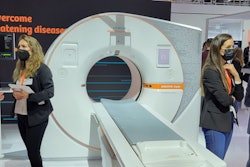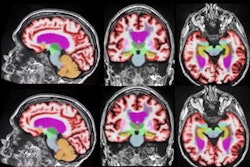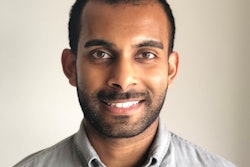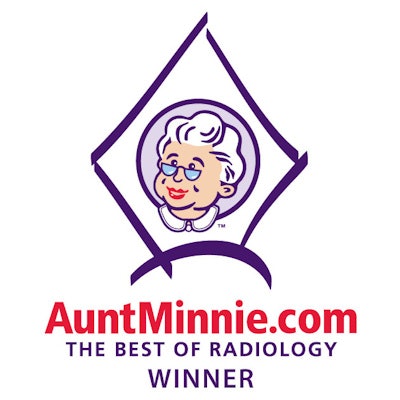
As they do every year, the winners of this year's Minnies awards highlight how the diverse pieces of medical imaging unite into a single glorious mosaic. The Minnies laureates for 2016 range from a researcher whose life's work helped shape U.S. healthcare policy this year to a radiologist who is winning his fifth Minnie.
AuntMinnie.com has awarded the Minnies every year since 2000 as our way of recognizing excellence in radiology. Candidates are selected from nominations submitted by our members; winners are then chosen through two rounds of voting by a panel of experts representing luminaries in radiology. This year's campaign featured 215 candidates in 14 categories, along with the Best Radiology Image winner selected by votes on our Facebook page.
Curious about the winners? Check out the profiles below to learn more.
Most Influential Radiology Researcher
Winner: Dr. Perry Pickhardt, University of Wisconsin
It might be a bit of an overstatement to say that 2016 saw the fulfillment of a life's work in research for Dr. Perry Pickhardt (for one thing, he still has many years left in his career), but it's not far from the truth. This year, the U.S. Preventive Services Task Force (USPSTF) included CT colonography among the tests it recommends -- a watershed event that will ultimately lead to Medicare reimbursement and more widespread use of imaging-based screening for colon cancer.
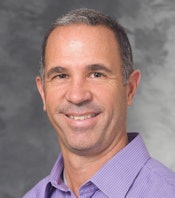 Dr. Perry Pickhardt
Dr. Perry PickhardtThe USPSTF's action represents a validation for Pickhardt, who was the lead author on a landmark study published in 2003 that demonstrated the value of CT colonography (also known as virtual colonoscopy) as a colon screening tool. Since then, numerous attempts to gain a USPSTF recommendation fell short, despite the publication of a growing body of evidence -- much of it involving Pickhardt and his colleagues -- in favor of the test.
Pickhardt came to radiology through an early interest in physics. While taking a graduate school course in medical physics, he realized it was the images that piqued him the most. Following medical school at the University of Michigan, he entered radiology residency at Mallinckrodt Institute of Radiology at Washington University in St. Louis.
The U.S. Navy had paid for Pickhardt's medical school, so instead of a fellowship, he started a four-year stint in the U.S. Navy as a military radiologist. His service took him from the U.S. military base at Guantanamo Bay, Cuba, just prior to the 9/11 terrorist attacks, to Walter Reed National Naval Medical Center in Bethesda, MD, in the early 2000s.
It was at Walter Reed that Pickhardt performed the research study screening veterans with CT that would ultimately be published in 2003, even though he was a junior radiologist at the time. "In the Navy, you can advance quickly," he noted.
Over the years, Pickhardt has examined CT colonography from a number of angles, estimating that he's published more than 100 papers on the topic, a number that rises close to 200 when research on extracolonic findings is included. But he pointed out that he's also actively researching other areas, such as volumetric texture analysis, liver disease, and low-dose CT protocols.
"It's not about the numbers; it's that each paper answers a question," he told AuntMinnie.com. "I always feel like each paper solves little pieces of a puzzle, and that's what drives me."
Pickhardt currently has two main areas of research interest. First, he is trying to determine the factors that lead some polyps to develop into colorectal cancer, while the vast majority remain benign. More knowledge in this area could help make CT colonography more precise and help physicians better determine which patients should be sent on for invasive colonoscopy.
Second, he is studying opportunistic screening, or using the data from CT colonography studies to screen for other conditions, such as osteoporosis. That would make CT colonography even more cost-effective as a screening test, he believes.
While the USPSTF recommendation was welcome news, Pickhardt believes that there's still much work to be done before CT colonography becomes a routine screening test -- in particular, convincing primary care physicians to refer patients. If that doesn't happen, then all the research papers and clinical studies could be for nothing.
"Now I want to see [CT colonography] help the bottom line in terms of patients," Pickhardt said. "If it doesn't lead to that, then it's all just academics."
Runner-up: Dr. Sanjiv Gambhir, PhD, Stanford University
Most Effective Radiology Educator
Winner: Dr. Pamela Johnson, Johns Hopkins University
Radiology education has always been a calling for this year's laureate of Most Effective Radiology Educator, Dr. Pamela Johnson, radiology residency program director at Johns Hopkins University.
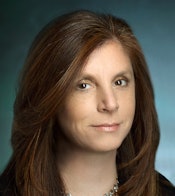 Dr. Pamela Johnson
Dr. Pamela Johnson"I've always wanted to be a program director, ever since I was a resident," she told AuntMinnie.com.
Johnson realized her dream and took over as program director in 2014 after serving in a number of roles in the university's radiology department, primarily in its body CT section, starting in 2001. She performed her residency at Johns Hopkins after earning her medical degree at Thomas Jefferson University in Philadelphia.
Among Johnson's milestones as program director is the creation of a combined molecular imaging residency that includes dual board certification in both radiology and nuclear medicine. The goal of the new residency is twofold: Address the issues faced by nuclear medicine trainees in getting jobs in a market shifting to hybrid imaging, and take advantage of the exciting growth in new modalities such as PET/CT and PET/MRI.
Johnson also led the creation of special distinction tracks at Johns Hopkins that let residents focus on particular areas of study, ranging from education to health policy to innovation and entrepreneurialism.
One of the tracks also covers high-value imaging, an area near and dear to Johnson's heart. She believes that the focus on cutting healthcare costs by reducing inappropriate imaging is giving radiologists the ability to lead the debate through initiatives such as Choosing Wisely. Johnson is currently involved with a working group identifying the next five radiology tests that should be the target of the next Choosing Wisely announcement.
Johns Hopkins is also promoting high-value imaging by running ongoing continuing medical education (CME) courses for radiologists to educate providers, and it will host a national high-value research conference in 2017. But perhaps mostly importantly, resident training is key to making sure that providers are ordering appropriate exams, Johnson believes.
The dearth of women in radiology has been a major issue recently, and it's another focus of Johnson's attention. Even though there is more or less gender parity when it comes to medical school, only about 20% of female medical students pick radiology as a specialty. This comes even as a recent study indicated that academic radiology is one of the only medical specialties where salaries for women are equal to those of men.
Johnson works with Dr. Karen Horton, interim chair of the radiology department at Johns Hopkins and Johnson's predecessor as program director, on reaching out to female medical students and demonstrating that radiology is a good career choice for women. Johnson cites the high ratio of women at upper levels in the radiology department at Johns Hopkins, and also points out that radiologists are even becoming more involved in patient care.
"It boggles our mind: Why wouldn't a woman want to be a radiologist?" she said. "It's such a great field."
Runner-up: Dr. Frank Gaillard, Radiopaedia
Most Effective Radiologic Technologist Educator
Winner: Diane Kawamura, PhD, Weber State University
With a career in radiology that started over 50 years ago, Diane Kawamura, PhD, has seen the field evolve from one based exclusively on classical radiography to a discipline that encompasses a variety of imaging modalities and is even beginning to delve into molecular medicine.
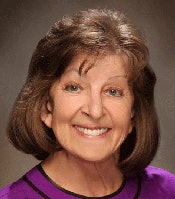 Diane Kawamura, PhD
Diane Kawamura, PhDKawamura's life in radiology began in 1964 when she entered a radiologic sciences program in South Dakota that accepted only single female students. After completing the program two years later, she moved to Ogden, UT, for her first job as a radiologic technologist in a private office for radiologists. In her second job, she was making $2 an hour.
In 1978 she accepted a job teaching radiologic sciences at Weber State University in Ogden, and she's been there ever since. When sonography came along, she learned enough about the modality to begin teaching classes in 1980; at the time, there were only 10 registered sonographers in the state of Utah. Now, Kawamura is educational director of Weber State's diagnostic medical sonography program.
Weber State offers training in the radiologic sciences at three levels: associate, bachelor's, and master's degrees, and Kawamura is involved in all three. She teaches four master's-level courses, as well as core courses and classes on topics such as imaging/pathology and research methods.
Educational outreach also occupies a big part of Kawamura's schedule. She travels to facilities in remote areas of Utah and neighboring states to help teach and evaluate students. On one recent four-day trip, she drove 700 miles and visited eight hospitals.
Kawamura acknowledges that she's in the twilight of her career, estimating that she'll retire in about two and half years. But even with all the experience she's accumulated, Kawamura said she still learns something from her students every day.
"The students have their 'Aha!' moments, and they teach a lot," Kawamura said. "Being with them to share information is a great experience."
Runner-up: Joey Battles, American Registry of Radiologic Technologists
Most Effective Radiology Administrator/Manager
Winner: Martin Bledsoe, Johns Hopkins University
From the coal fields of Kentucky to the urban neighborhoods of East Baltimore, Martin Bledsoe has seen his share of change in healthcare. In addition to managing the radiology operations at Johns Hopkins Medicine, he's also president of Johns Hopkins Imaging, the university's foray into the outpatient imaging center business.
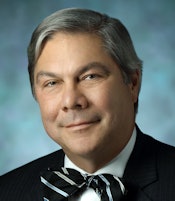 Martin Bledsoe
Martin BledsoeBledsoe's first job in healthcare was as a nurse in Kentucky, and he eventually he became a nurse practitioner. In 1998 he joined Johns Hopkins, managing the institution's cardiac cath operations, and in 2000 he was promoted to administrator of the entire radiology department. He now manages operations including a radiology group with 85 radiologists and a business with 1,500 employees.
Bledsoe has to keep his finger on the pulse of economic trends, some of which are peculiar to the state of Maryland. For example, it is the only state to have an exemption to changes in Medicare reimbursement rates. Instead, Johns Hopkins must answer to masters at the state level, who several years ago implemented their own form of capitation in which hospitals would no longer be paid more for treating more patients.
That prompted Hopkins to begin exploring opportunities for expansion in outpatient imaging; the university bought its third imaging center in May and hopes to complete its fourth center acquisition in early 2017. Bledsoe noted that running imaging centers is very different from managing radiology departments, with outpatient imaging focusing on maximizing revenue while hospital departments prioritize keeping expenses in check.
Running an outpatient imaging center business also requires attention to things like sales and marketing -- a business that Bledsoe had to learn from scratch. Fortunately, he was able to tap the expertise of some of the hospital's vendors for advice. "I had never had a sales team before," he said.
Bledsoe believes that one differentiating factor of Johns Hopkins is the high quality of its personnel. The university uses the Gallup Employee Engagement service to constantly measure the level of engagement and enthusiasm of its workforce: The institution has a 12-to-1 ratio of engaged to disengaged employees, which is among the highest in the industry.
Johns Hopkins also places a major emphasis on hiring from the community -- an important factor in a community as challenged as East Baltimore, which was the setting for the gritty urban police drama "The Wire." Johns Hopkins also conducts community service and educational programs, as well as internships for neighborhood kids interested in science and math.
"Since we are in the community, the most important thing we can do is provide people with meaningful jobs," Bledsoe said. "Belonging to the community is an important of my job."
Runner-up: Charles Powell, PhD, Emory University




